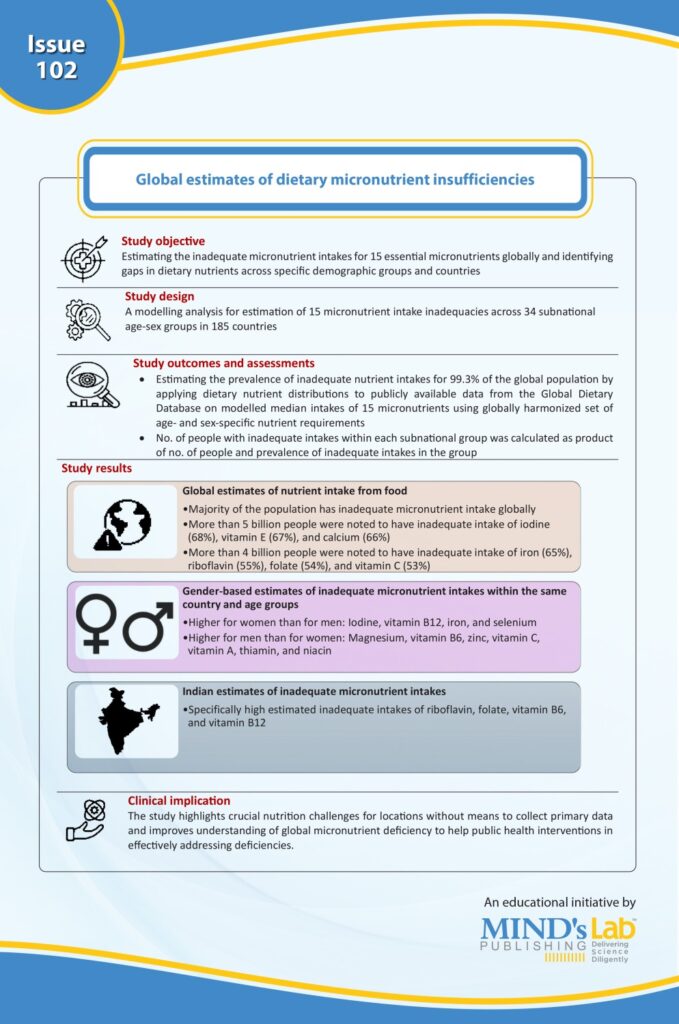
Micronutrient deficiencies consequent to inadequate micronutrient intakes and/or inadequate supplies is regarded as a major form of malnutrition and pose a major challenge to public health globally. Although global micronutrient deficiencies and inadequate nutrient supplies have been analyzed over the past 10 years, a large gap remains in respect of intakes of many micronutrients and specific population groups affected. There is thus a crucial need to identify which nutrients pose the greatest risk and to identify where and in whom these deficiencies are observed, for tackling this large-scale public health crisis.
A recent modelling analysis by Passarelli et al., published in “The Lancet Global Health”, reported a novel, replicable, and accessible method to estimate micronutrient intake, accounting for the shape of a population’s nutrient intake distribution and based on dietary intake data across 31 countries. Majority of the global population has inadequate intake of at least ONE micronutrient according to the analysis. A high estimate of inadequate intake of riboflavin, folate, and vitamins B6 and B12 was reported in India (see Graphic).

(Source: Passarelli S, Free CM, Shepon A, Beal T, Batis C, Golden CD. Global estimation of dietary micronutrient inadequacies: A modelling analysis. Lancet Glob Health. 2024:S2214-109X(24)00276-6.)
